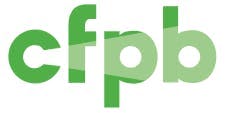Market update
Rising home values pull more Americans from underwater
Fewer Americans are underwater as the negative equity rate for homeowners with mortgages declined during the fourth quarter of 2012, according to the Zillow Negative Equity Report.
More Americans saw their home values exceed what they owe as 27.5 percent, or 13.8 million homeowners, reported being underwater compared with 31.1 percent, or 15.7 million homeowners, during the comparable 2011 period. The drivers behind the decline in the negative equity rate were credited to the combination of home values rising 5.9 percent last year, according to the Zillow Home Value Index, and sustained high foreclosure rates.
“Freed from negative equity, homeowners will have more flexibility, and some will likely choose to list their home for sale, helping to ease inventory constraints and moderating sometimes dramatic, demand-driven price increases in some markets,” said Dr. Stan Humphries, Zillow’s chief economist.
Among the stronger markets of the 30 metro areas Zillow tracks were Phoenix, with 135,099 more homeowners climbing into positive equity, followed by Los Angeles (72,936), Miami-Fort Lauderdale (70,484), Dallas-Fort Worth (59, 461), and Riverside, Calif., ( 58,417). Zillow forecasts the negative equity rate will decrease to 25.5 percent by the fourth quarter of 2013.
“Negative equity is still very high and millions of Americans have a very long way to go to get back above water, even with the current robust levels of home value appreciation in most areas,” said Humphries. “As a result, negative equity will remain a major factor in the market for the foreseeable future.”
Single-family tenants could be tomorrow’s homebuyers
Demand for single-family rental housing could be more stable and lucrative than the market for multi-family rental units, according to a national survey commissioned by Property Premier Property Management Group, Memphis, Tenn.
Among the findings is that single-family tenants are 25 percent more likely than apartment dwellers to stay in their homes for five years or longer. Single-family renters also are wealthier, with median income ranging from $75,000 to $100,000 compared with $50,000 to $75,000 for multi-family tenants. Since single-family home renters tend to have large families with children, they rate neighborhood amenities like parks, good schools, and a friendly community much higher than apartment tenants as factors for deciding where to live.
Single-family rental housing demand has been fueled by families who lost homes to foreclosure and were unable to secure a mortgage; however, the single-family rental market could serve as a stepping stone. Sixty percent of single-family renters said they anticipate buying a home during the next five years versus 44 percent of multi-family tenants. Families with three or more members (63 percent of all renters) and households with children under 13 years old (69 percent) are more inclined to become homeowners than the 43 percent who intend to continue renting.
Despite reports that tight financing prevented renters from becoming homeowners, only 29 percent of renters who do not plan on buying a home cited the inability to secure a mortgage as a reason. Forty percent said they enjoy renting, and 39 percent said they have no desire to buy a home.
Mortgage study finds “propensity” to misreport
Nearly one out of 10 loans sold in the $2-trillion market for RMBS (residential backed-mortgage securities originated without government guarantees) contained misrepresentations about the quality of those securities.
A research paper authored by three real estate and finance professors from the graduate business schools of Columbia University and the University of Chicago found that mortgage security underwriters misrepresented asset quality to buyers by misreporting such details as the occupancy status of the borrower and the existence of a second lien. These omissions increased as the housing market peaked in 2006.
The paper, titled, “Asset Quality Misrepresentation by Financial Intermediaries: Evidence from RMBS Market,” merged a data set of more than 1.5 million loans collected by Blackbox Logic with credit reports from Equifax. The study found that 27 percent of loans obtained by non-owner occupants misreported their true purpose, and 15 percent of loans with liens were reported as not having any lien. Overall, more than 9 percent of loans had one of these misrepresentations.
Although the study’s authors did not directly tie pervasive misreporting to the underwriters’ quality of risk management or with incentives paid to top management, that inability to establish a connection should not imply that those factors are unrelated.
“More work is needed to understand the internal organization of financial intermediaries, which makes some activities respond to governance mechanisms while leaving others relatively unaffected,” the report stated.
Feds issue rules to protect borrowers from foreclosure
The Consumer Financial Protection Bureau issued new mortgage rules aimed at offering more protection from foreclosure for homeowners and preventing the risky lending practices that torpedoed the housing and financial markets.
Yet advocates for consumers contend that the guidelines will expose homeowners to more risk while proponents for the lending industry argue that implementing all the codes too quickly could hurt business.
For example, the guidelines, which become effective next January, shield banks from homeowner lawsuits if the lender can demonstrate that the loan met the bureau’s definition of a qualified mortgage. These same rules also cap the amount of fees and origination costs that mortgage brokers can charge borrowers at 3 percent. Home builders that operate mortgage units could be affected because charges for affiliated services, such as title insurance, appraisals, and setting up escrow, count toward the cap. However, if borrowers obtain those services from third parties that are not owned by the brokerage, then the charges are not tallied toward the cap.
The new rules also include the following restrictions:
• Mortgage servicers are prohibited from foreclosing on borrowers who are seeking loan modifications or other foreclosure alternatives.
• Servicers must consider all alternatives to foreclosure, not just the options that are more favorable for them.
• Servicers cannot file the first foreclosure notice until the borrower falls at least 120 days behind on payments.
• Compensation for brokers and loan officers will not be based on the terms of the mortgages they originate. This restriction targets rewarding lenders for selling predatory loans.
• Servicers must maintain accurate and accessible information about their clients.



